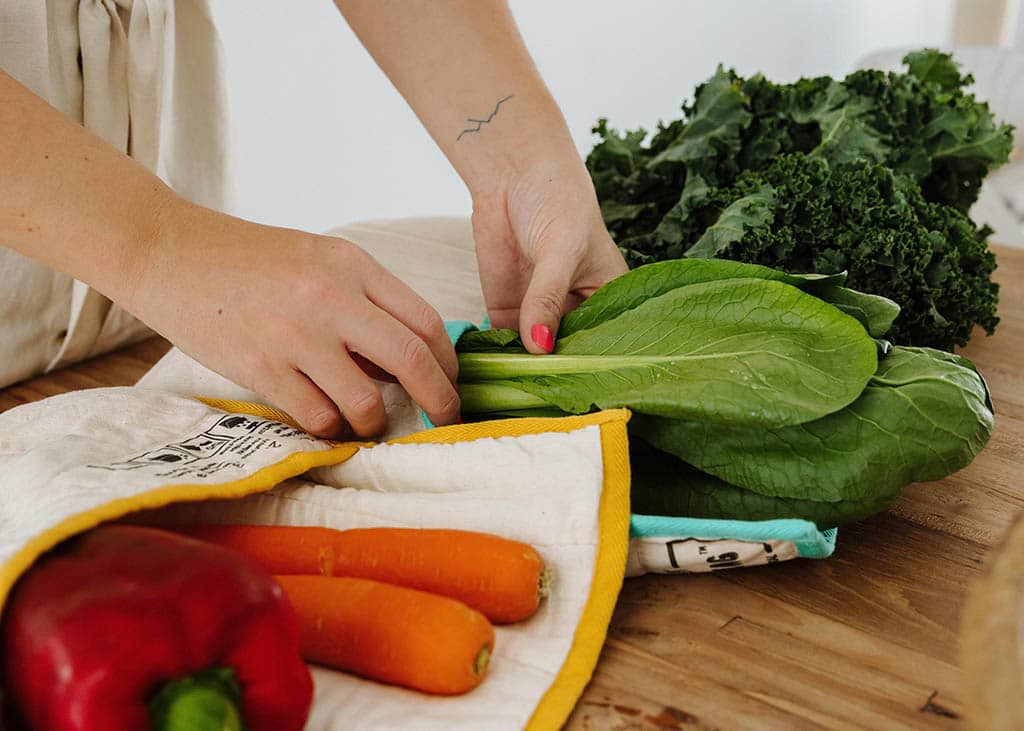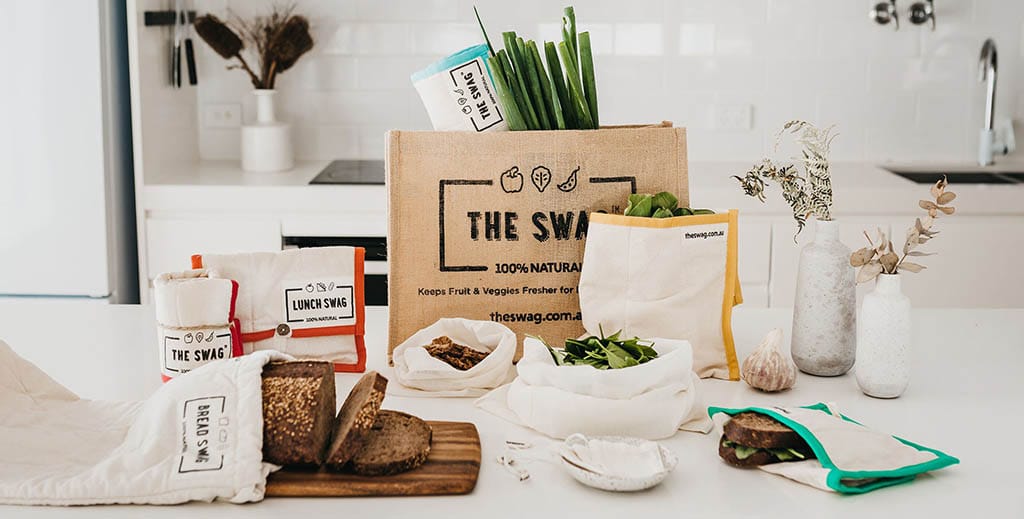Food waste. It’s responsible for around 8 percent of global greenhouse gases and if food waste were a country, it would be the third-largest emitter in the world.
According to the Food Sustainability Index 2017, Australia has the highest food waste generation per capita.
And it’s not just about what we chuck in the bin and the after-effects. Every bit of food we buy was responsible for greenhouse gas emissions before it even got to our fridges. When we throw out food, we’re also wasting the labour, water, energy, and resources it took to get the produce from the farm to our table.

And while our individual households aren’t to blame for the entire food waste problem, we still contribute 34% of it through our daily habits.
Here’s what we can do about it.
1. Plan meals, create a shopping list and stick to it
The first step is to work out who you’re feeding and how many meals you need to make for the week.
- Research recipes, plan your favourites and write a list of meals. Breakfasts, lunches, dinners, and snacks.
- Check your fridge, freezer, and cupboards to see what you already have on hand that can be used.
- Write a grocery list.
- Stick to the grocery list!
If you have a household with kids or housemates who’s weekly plans may change and they might skip dinner, plan meals that can be eaten the next day for lunch or frozen for later.
2. Buy less food – you can always come back for more
Plans change, things come up, you might want to order pizza on Friday night. Unless you have a schedule you typically stick to, it’s best to buy less than you need and do a mid-week top-up shop.
The best way to prevent food waste is to not buy it in the first place.
3. Choose ugly produce
In Australia, it’s estimated 20-40% of all fruit and vegetables are rejected and don’t even make it off the farm due to ‘appearance quality’ standards. And each year we throw away over $8 billion of perfectly edible food – around 4 million tonnes in total.
Apparently it’s from consumer demand so let’s set a new standard so our farmers aren’t wasting their precious time and resources growing food that won’t be eaten.
Next time you visit the grocer or farmers market or shop online, look for the ugly or imperfect produce section.
I assure you, that wonky carrot or misshapen banana will taste delicious. And at the end of the day, once it is chopped up or cooked and or in your mouth, it’s exactly the same and has exactly the same nutrients.

4. Store fresh produce with The Swag to keep it fresher for longer
Storing your fresh produce correctly gives it the best chance for survival. The Swag produce bags help keep your fruit and veggies fresh for two weeks.
These cotton bags work by using three permeable layers.
The outer layer protects your fruit and veggies by preserving the water within the middle layer and preventing it from drying out too quickly. The middle layer holds the bulk of the moisture. This layer draws the water away from the fresh produce but allows it to hydrate as needed. The inner layer provides a dryer protection barrier against the produce helping it to stay dry and fresh.
I’ve been trialing these bags for a few months now and can confirm they do work!
Leafy greens like kale, bok choy, and silverbeet are always the first to go in my fridge but when I store them in the Swag Bags, they stay fresh and crisp for almost two weeks. I also use them for carrots, celery, and zucchini and they work a treat.
The Swag is also offering our readers a free gift with purchase. Orders above $50 across the range get a free Set of Beauty Swags using the code BEAUTYSWAGGIFT
5. Use up ingredients and cook with what you have
How many times have you looked in the fridge and decided there wasn’t anything in there worth eating, or a complete meal so you ducked to the shops for more ingredients? For me personally, far too often.
Next time you think there’s nothing to eat in your fridge, challenge yourself to make a meal using what’s currently in your fridge, freezer and cupboard.
Get creative, flex your cooking skills and if you need some recipe inspiration, the Love Food Hate Waste App is brilliant for finding new recipes using the ingredients you have on hand.
And if your fresh produce is looking a bit sad? Older food can be revived with a little creative cooking! Wilted veg can be used in soups and stews. Herbs can be blended to make a pesto. Anything can be transformed into a quick and delicious stirfry.
6. Freeze what you can’t eat
I live by the philosophy that almost everything can be frozen. Just make sure you store them properly in airtight containers or glass jars.
- Bananas and most any fruit can be chopped up and stored in containers or silicon pouches to be used later in smoothies, desserts, stewed, or even to make ice-cream.
- Leafy greens can be frozen to use in soups, stews, and stirfrys.
- Root vegetables like potatoes and carrots can be cooked to make mash, purees or soups
- Herbs can chopped up and mixed in with water or olive oil and added to ice cubes for later cooking
- Cook tomatoes and herbs to make a sauce
It’s worth noting that the quality will decline over time, as a general rule three months is a good timeframe to store frozen food.
7. Compost your food scraps
Composting our food scraps helps reduce carbon emissions. For every tonne of food waste in landfill, a tonne of CO2-e greenhouse gas is generated. The greenhouse gases produced by food waste in Australian landfills each year is equivalent to the emissions of Australia’s steel and iron ore industries combined.
When our food waste accumulates in landfills, it begins to decompose. It’s then broken down by bacteria through anaerobic digestion which means there’s not enough oxygen reaching all the food waste. Without oxygen to facilitate the decaying process the food waste then begins to produce methane, a greenhouse gas that is 21 times more potent than carbon dioxide. The simple act of composting is one of the easiest ways to help reduce our impact on the planet.


